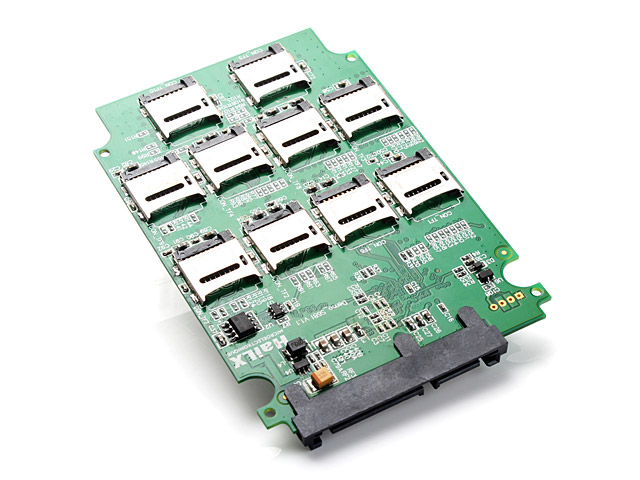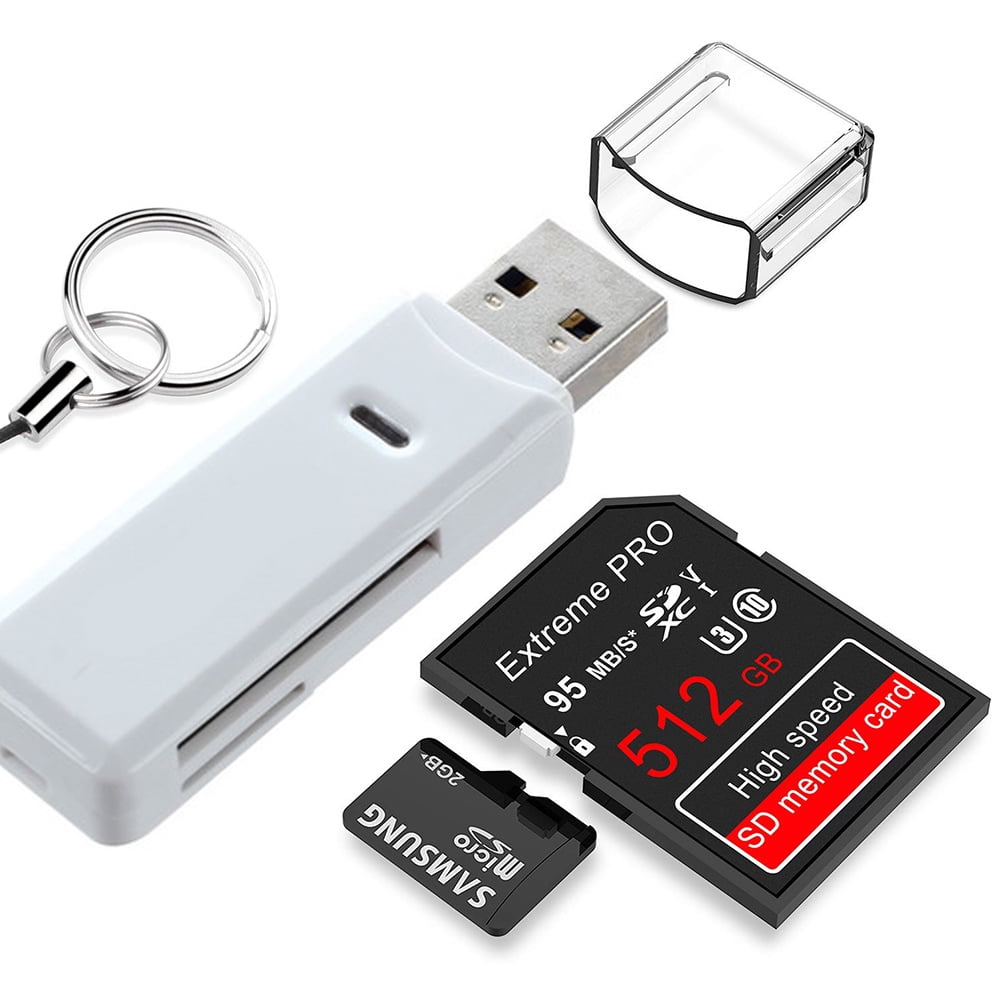The SanDisk Extreme Pro UHS-II USB-C Reader is pricey ($49 on Amazon, and unlike the other adapters we tested, it has just a single SD card slot—no microSD, CF, or USB-A ports to extend its. Mac OS X 10.7; Mac OS X 10.6 Note: Mac OS X 10.6.8 is not recommended. A restart message appears when inserting an XQD memory card on a computer upgraded to Mac OS X 10.6.8. If you have already updated your OS and are unable to switch back to the previous version (such as 10.6.7), please use your XQD memory card with the XQD memory card reader. Sep 27, 2017 Try this with both a card inserted and no card inserted. If the card reader is recognized, you should see at least a Vendor ID, Serial Number, etc. Otherwise, it's a hardware or Firmware issue. If you see card info with a card inserted, then the card is recognized but no being mounted, and most likely you've got a software problem.
Once your SD card in your camera or microSD card in phone encounters some problems, e.g. you deleted some photos from the SD card inadvertently, or the card was formatted without intention, also memory card may get corrupted/damaged/error sometimes for unknown reasons. You must be very anxious to find a way to recover the valuable photos and videos from the SD card. Do not panic, easy-to-use software tools are available to recover the SD card.
There are several SD card data recovery software in the market, but most of them run on PC platform only (Microsoft Windows). If you have an Apple Mac computer (MacBook, MacBook Air, MacBook Pro, iMac, or Mac Pro), you will need to find a software works with macOS to perform the SD card recovery. CardRescue is one of the top SD card recovery software especially designed and optimized for Mac computer. It can be used to recover lost photos from SD card, SDHC/SDXC card, CF card, and microSD Card. Almost all SD card brands are supported including SanDisk, Kingston, Samsung, Lexar, PNY, and Transcend.
CardRescue software can be downloaded from
You may simple download and open the cardrescue-setup.dmg from CardRescue official website, then drag the CardRescue icon to the Mac Applications folder to complete the installation. The download and installation take only less than 1 minute.

After that, you may run CardRescue program from the Applications folder in Finder. On startup of CardRescue, you will need to enter an Administrator username/password to allow it to access the removable device (the memory card). Before the data recovery scanning starts, take the SD card out of your device (camera or phone), then insert it to your mac computer if it features an SD card slot which is usually at the side of the MacBook computer, or front panel of iMac. Otherwise, a USB to SD Card Reader is required to connect the card to your computer. The card slot or card reader lets your Mac read and write data to SD media. When you insert the card, make sure that the metal contacts face down and point toward the computer. Do not force card into the SD card slot, as this might cause damage.
On step 1 of CardRescue, simply select your memory card drive and choose the file types that you need to recover (e.g. JPG, TIF for photos, MOV, MP4 for videos). It also supports most raw image format files used by DSLR cameras like NEF for Nikon, CR2 for Canon. After that, you may click Next and the disk scan on the SD card will begin. Depends on your card capacity and card/card reader reading speed, the full scan takes from a few minutes to 1 hour. Please make sure your hard drive has enough free disk space to hold the recovered pictures and videos.
Sd Card Reader For Mac Os X

After the scans complete (if you have no patience waiting for it to end, you may click the Stop button anytime to cancel the scan and recover the found pictures only), CardRescue will list all the found pictures for preview. You may select the ones you need to save, or simply save them all. The recovered files will be saved to a folder on your hard drive. After the recover completes, you may open the folder in Finder to view them. CardRescue does not modify or write any data on the card to avoid further damage.

To get a better success rate, it is highly suggested not to write any data to the SD card before you recover them, e.g. stop taking new pictures and videos on the card, if you have to take more pictures on an event, try to use a different memory card. It is a smart choice to take the SD card out of the camera immediately after you realize that you deleted/formatted the card mistakenly. On the other hand, if you have already taken some new pictures before the recovery, you still have a chance to rescue files that have not been overwritten.
If you lost some pictures from your Android smartphone, and they were stored in the microSD card, you can also use the above method to recover them. But if they were stored in the internal storage of the phone, that is not applicable.
Many a time you want to create a bootable device for your new notebook, Netbook, or laptop. Nowadays, most of the electronic devices come with compactness. This gives rise to a number of notebooks that are manufactured without a CD/DVD drive. In such devices, you have to make use of either a flash drive or a memory card with high storage capacity.
Further here, you can learn to make bootable SD/SDHC card or USB drive for your Windows or Mac computer. Some of the SD cards or SDHC cards come with high storage sizes and are compatible with almost all the relevant devices. But many devices are only compatible with the SD card for booting.
Find out the safest way to create a bootable SD card for Mac and Windows. And also learn how to recover data lost while booting.
How to make Bootable SD/SDHC for Mac?
There are a number of simple steps to be followed to create bootable SDHC cards for your Mac OS but it requires an external application. You can also create a bootable SD card on Mac with the help of the terminal. The terminal method doesn’t need any external sources. It just requires an SD card to boot your Mac.
- Connect the SD/SDHC memory card to the computer.
- Go to Utility – you can call utility with the help of the finder option of the Launchpad on your computer.
- Select on the SD card and click Erase.
- In Format, select MSDOS FAT from the dropdown. Enter a name in the ‘Name’ field. This is optional for the user.
- Click Erase.
- Open the Terminal and go to the location of your system image – enter the appropriate location in command.
- In order to find all the disk drives in the Mac, type – SUDO DISKUTIL LIST – this will display all the connected disks with the Mac system.
- Make sure about the partitions and the identifiers like disk2, disk3, etc. Try to keep the number of partitions to be just one.
- To unmount the drive type; SUDO UMOUNT DISK2
- To unmount the subpartitions type; SUDO DISKUTIL UMOUNT DISK2p1.
- To make the SD card bootable type in; SUDO DD Bs=4m if= image_name.xyz of dev/disk2
Once you perform the above steps, the command starts executing and then, makes the SD card bootable for Mac operating system.
If you have lost your important data while making the SDHC card bootable. Do not overwrite any information and try to regain all your data from the SD card. Data restoration from SDHC or USB drive is easy with the help of Remo Recover tool.
Macbook Pro Sd Card Reader

Utilize Remo Recover software (Windows/ Mac) to easily recover data lost or deleted while booting from SD card or USB drive effortlessly. This tool works with a user-friendly interface and can safely restore more than 300 file formats like photos, videos, raw-images, documents, audio files, Office files, and etc. not only from formatted or corrupted internal hard drive but also from various external devices like USB, external hard drive, SD card, SDHC card and many more. Remo Recover is compatible with all the latest versions of Windows (Windows 10) and Mac (macOS Catalina) operating system.
How to make SD/ SDHC card or USB drive Bootable for Windows?
Sd Card Reader For Mac Pro
The steps to make a bootable SD/SDHC card on Windows 10 or its previous versions comprise of some similar steps. This involves the complete formatting of the SD card and then uploading the OS files to make bootable SD card or SDHC card. Follow the below steps to make a bootable SD card or flash drive for windows;
- Connect the SD card or USB drive to your computer – make sure the SD card is empty and you do not have any valuable data on it.
- Go to Command prompt – In order to do that, go to Start menu and type cmd and hit Enter.
- Go to diskpart – To do that, go to start menu and type diskpart and press Enter.
- In the new window, type; list disk – the window should be system32/diskpart.
- From the list of the disks that your computer has, look for your SD/SDHC card. You can refer to the memory space of the disks to identify your SD card.
- Type; select diskX – the name of the disk you want to use i.e. the SD card.
- Type; Clean
- Type; Create Partition Primary
- Type; Active
- Type; Format Fs= NTFS Quick
- Type; Assign
- Type; Exit
- Now, mount your ISO file of Windows – Right-click on the image and select mount.
- Run the following commands:
- G: CD BOOT – G is the iso file drive letter.
- BOOTSECT.EXE/NT 60 F – F is the SD card or the drive letter for SD/SDHC card.
- Copy all the files from the ISO image to the memory card.
- Your SD/SDHC card is now in bootable mode, you can restart your computer and test the bootable SDHC card.
NOTE: While performing any of these steps double-check what you are selecting and what command you are executing. This is because any small mistake can corrupt your SD / SDHC card file system. Sometimes, you can fix your corrupt SD card in easy ways, but not always. There are chances that your card would become useless permanently. Hence, handle your card carefully.

Sd Card Reader For Mac Os Catalina
Conclusion
Mac Card Reader Driver
Hope this information on how to boot SD card or USB drive on Windows and Mac operating system is going to help you make bootable SD card. In case of any data loss, you can use the Remo Recover tool to restore data from internal or external devices with ease.